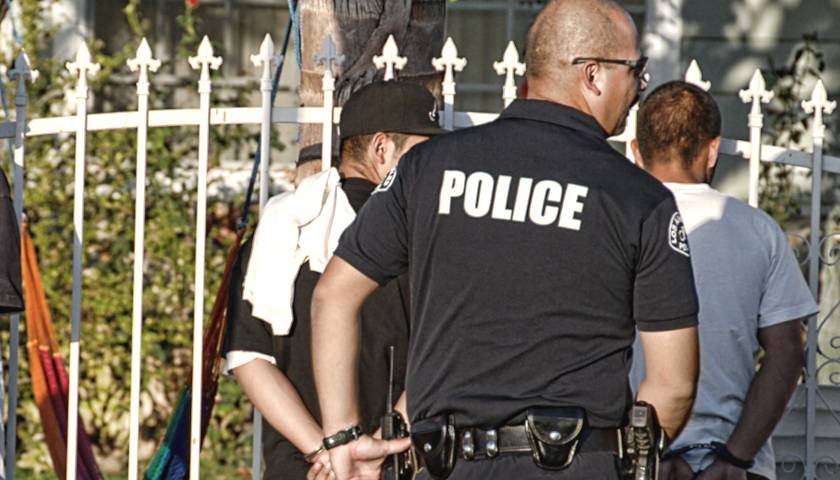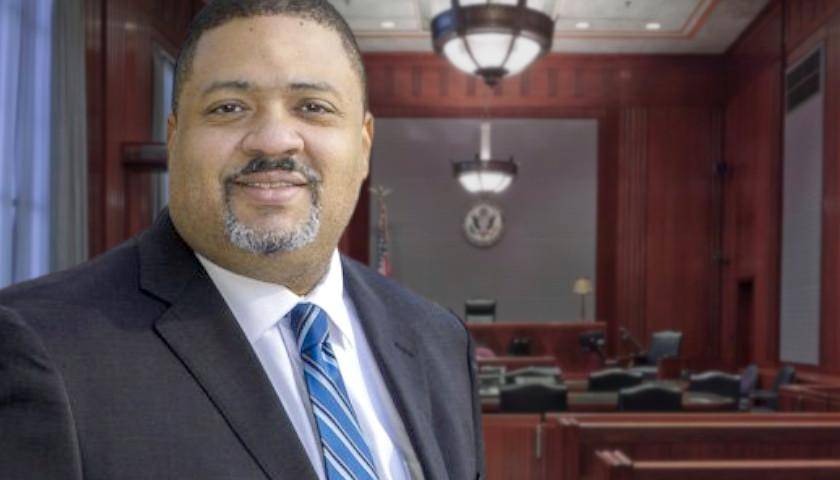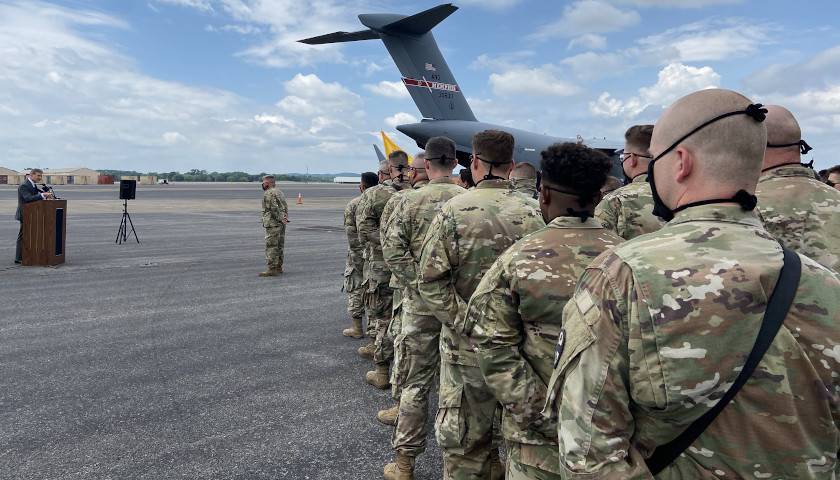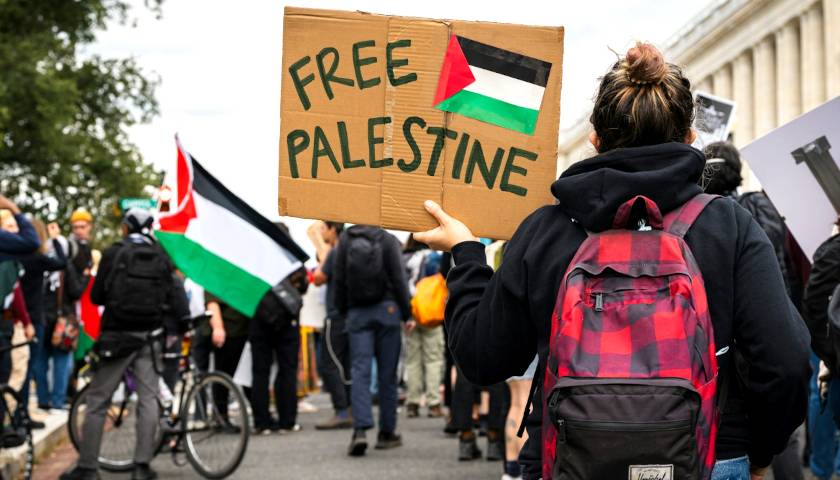by James Varney & Abigail Degnan
When Dexter Reed died in a shootout with Chicago police on March 21, the incident was quickly grafted onto a narrative that began in 2014 after a policeman killed Michael Brown in Ferguson, Mo. – namely, that the U.S. faces an epidemic of violence by unbridled cops who do not believe black lives matter. “Killing of Dexter Reed raises questions about Chicago police reform. ‘The message is, go in guns blazing,'” blared a headline in the Chicago Sun-Times.
Reed’s death joins a long list of police shootings that have received wide media coverage and political scrutiny – especially those involving African Americans. Over the years, many police departments embraced reforms, including the use of bodycams, to document incidents – an effort bolstered by a public eager to use smartphones to record the behavior of cops. In 2015, the Washington Post created a database logging every person shot dead by police in the U.S.
The belief was that this attention would make all law enforcement officers, especially the bad ones, think twice before pulling the trigger, and significantly reduce the number of shootings – which stood at 994 the year Brown was shot.
Instead, there have been steady, incremental increases. “Police killed the highest number of people on record in 2023,” the Post reported as the number of deadly police-involved shootings hit 1,162 last year.
But if neither a glaring spotlight nor reform gestures to date have moved the needle much in terms of reducing fatal police shootings, perhaps something else explains law enforcement lethality and public alarm about it.
Numerous professional criminologists told RealClearInvestigations that the problem isn’t racist or trigger-happy police officers. Instead, a handful of intertwined factors are at work: the almost immutable math of crime and demographics; media sensationalism; distorted public perceptions about race and guns; and the inability of inertia-bound police departments to adapt in ways to make a difference.
— First, the math. “The number of improper, bad shootings is very small,” said Geoffrey Alpert, a professor in the criminal justice department of the University of South Carolina. “The vast majority are not questionable.”
There are some 18,000 police departments in the United States with a population of more than 335 million people, leading to some 50 and 60 million annual encounters between police and civilians, according to an analysis of Justice Department data, said Justin Nix, a criminal justice professor at the University of Nebraska. Nix said only a tiny fraction of those interactions – “we’re talking about some .002 percent a year” – result in lethal gunfire.
Under present circumstances, he said, the ballpark figure of 1,000 fatal police shootings annually is “baked into the cake,” adding, “You have to wonder what all the reforms can do that would really make a dent in this.”
What’s more, police aren’t exaggerating the lethal threats they face. In 2023, the Washington Post database showed 83 percent of people killed by police bullets were armed – 62 percent with a gun and another 15 percent with a knife – percentages that criminologists said have held steady over the years. In other cases, officers are facing potentially lethal situations with vehicles, or even deranged people charging them with swords, hatchets, or garden tools.
— Second, media coverage distorts the circumstances of most fatal police shootings. Several criminal justice professors stressed that the overwhelming majority of lethal shootings by police involve clear justification. Nevertheless, the media and its audience tend to focus on those deaths where there is no clear justification, or where the claim of justification appears dubious.
The focus on the small subset of dubious or wrongful shootings often reflects “split-second syndrome,” said John Shjarback, a criminal justice professor at Rowan University. That means a focus on the moment a trigger is pulled and a bullet fired, rather than the time that led up to that fateful moment.
“We focus on the split-second when the officer pulled the trigger, but there are myriad reasons for that and a lot of them are upstream from when they do so,” Nix said. “We need to move beyond that final frame to understand why the encounters ended the way they did.”
But that rollback works both ways, criminologists said, and may show steps taken by the suspect that made gunshots more likely too.
Michael Brown’s death in Ferguson is a case in point. In the immediate aftermath of his shooting, a version of events quickly took hold that Brown, 6’4″ tall and weighing more than 290 pounds, was a “gentle giant” who had been in the road, submissive with hands raised saying, “Don’t shoot.”
That made the shooting seem like an extrajudicial execution. But when the tape was rewound back from that final frame, and after a meticulous investigation by President Obama’s Justice Department, it emerged that in the time leading up to the lethal encounter, Brown had physically bullied a shopkeeper after stealing from him and later grappled with the officer, trying to get his handgun. He never raised his hands in surrender. No charges were brought against the officer.
Shjarback said you can endlessly parse raw numbers that seem to tell an alarming story, but when they are examined more carefully, they challenge the claim that there is a national crisis around police shootings.
“Most of these cases involve incidents where cops were well within their authority to use lethal force,” Shjarback said. “However, you could also look at cases that were lawful but awful. There might have been cases where officers escalated things, failed to use proper tactics (e.g., distance, cover), or placed themselves in situations called ‘officer-created jeopardy,’ that eventually lead to them having to use deadly force.”
But that rollback works both ways, criminologists said, and may show steps taken by the suspect that made gunshots more likely, too.
The fatal Reed shooting is an illustration. Overlooked by many in the furor over the heavy fire poured out by Chicago Police Department officers – 96 shots – is the fact Reed deliberately disobeyed repeated orders from increasingly nervous police officers, then opened fire and wounded one of them, precipitating the bloody ending.
— Third, distorted public perceptions of racial bias also heighten alarm. Research also challenges the idea that African Americans are targeted by the police.
In 2023, The Guardian newspaper published a dataset – Mapping Police Violence – including not just shootings but all lethal encounters involving police. It concludes that black people “were killed at a rate 2.6 times higher than white people.”
But such raw numbers ignore the fact that blacks are more likely to commit crimes. In a seminal study of Houston police that echoes other findings, Roland Fryer, a black economist at Harvard University, reported, “On the most extreme use of force – officer-involved shootings – we find no racial differences in either the raw data or when contextual factors are taken into account.” Once the number of police encounters was factored in, Fryer found, police were markedly less likely to shoot at blacks and Hispanics than at whites. After publishing his paper – whose conclusions he found so surprising that he ran the numbers twice – Fryer said, “all hell broke loose.” He told Bari Weiss of the Free Press, “I had colleagues take me to the side and say, ‘Don’t publish this. You’ll ruin your career.'”
— Fourth, distorted public perceptions about guns compound the alarm. Some criminologists RCI spoke with said the proliferation of guns helps explain why the number of fatal police shootings has not gone down.
Americans have bought more than 60 million firearms since the COVID pandemic, and purchases are rising. But while Americans now own about 400 million legal firearms, the percentage of households possessing at least one firearm has, with ups and downs, remained largely unchanged since 1972 – at about 43 percent, according to Statista.
Although several states have passed concealed carry laws, there is no consensus among experts about their impact. “Evidence that concealed-carry laws may increase violent crime is limited,” a RAND Corporation study found.
Ultimately, however, the issue of gun ownership and permit laws has little bearing on police killings because the guns police encounter are so frequently illegally acquired, said Jeff Bumgarner, director of the criminal justice department at Texas State University. And if gun purchases and pro-gun rights laws were directly linked to fatal police shootings, the annual total would reflect much bigger increases.
Instead, the U.S. has seen creeping increases.
— Finally, police departments can make meaningful adaptations to make a difference, but aren’t doing so. Criminologists say there has been more talk than action regarding police reforms since 2015 – even after the high-profile turmoil and budget-focused (and largely unsuccessful) “defund the police” campaigns that activists led after the deaths of Brown in 2014 and George Floyd in Minneapolis six years later.
“Policing does not change fast,” said Philip Stinson, a criminal justice professor at Bowling Green State University who specializes in police crime, or “the arrests of sworn officers.” “To my knowledge, firearms training and use of force training has not substantively changed across policing. It is business as usual in policing and that is why we haven’t seen a reduction in police shootings.”
While some big-city police departments have improved training, the effort, funding, and commitment to change have yet to be widely embraced by the nation’s roughly 18,000 police forces.
But if there were a complete reorientation in the approach of most law enforcement agencies, the numbers could be reduced, many criminologists believe.
Chuck Wexler, the executive director of the Police Executive Research Forum (PERF) is one who believes “business as usual” can change. At its core, this involves abandoning the ancient mantra of cops beginning a shift – get home safely – to “the sanctity of human life.” Wexler said it will be “much more challenging” to shift the numbers on the 60 percent of lethal shootings that involve a suspect with a gun, “but with the other 40 percent, that’s where I believe we can make a difference.”
“Instead of ‘get home safe’ we should be thinking, ‘everyone gets home alive’ – arrested, in custody, but alive,” he told RCI.
The idea seemed revolutionary when cops in Scotland first presented it to him, Wexler said, because it cut against the blue line’s ingrained philosophy. Bumgarner, a former cop, seconded the concept. “The culture of police should shift to where there is a primacy on life,” he said. That thinking animated a set of “Guiding Principles on Use of Force” that PERF published in 2016, two years after Brown’s shooting. There was an intense backlash against the manifesto, led in part by the International Association of Chiefs of Police, which did not respond to RCI’s request for comment in this story.
Not all law enforcement officials objected to the new thinking, however. One of them was Sheriff Michael Chitwood of Volusia County, Fla.
The former Daytona Beach police chief was elected in 2016 and he embraced PERF’s “Integrating Communications, Assessment, and Tactics,” a training program PERF offers free through the Howard G. Buffett Foundation to any officer who comes to its Decatur, Ill., facility.
“In my first six months in office we had more than a half a dozen shootings,” Chitwood said. “Something had to change. I started looking into it and it was crazy, given how quickly they would return fire, I couldn’t believe my deputies hadn’t wound up shooting each other.”
The Volusia County deputies had six incidents involving deadly force in 2017, Chitwood’s first year in office, and since then the number has fallen: from four, then two, three, four, and, in 2022, zero. The sheriff’s office said its 2023 report was not concluded, but there was an incident last August in which a career criminal was killed in a shootout with authorities. Investigators concluded the killing bullet did not come from a Volusia County deputy, however.
The decline and eventual full year without a lethal shooting happened because deputies made the “sanctity of life” their cardinal principle, Chitwood said, a change that began to take root around 2019.
The training was sorely tested last December when, around 4:30 a.m., they were called about a theft from a Wawa convenience store by a robber with a knife. The suspect fled in a getaway car, tried to ram one deputy’s vehicle, blew two tires on a traffic rail cops set down, and wound up in the driveway of his house. When officers tried to approach him there, he opened fire.
By now, cops were swarming a scene that seemed destined to end in bloodshed. Deputies managed to clear the suspect’s son and dog from the house and then used a Bearcat, a SWAT (Special Weapons and Tactics) vehicle, to block the suspect’s driveway and force the car into the garage. From there, the suspect went into his house and up to the attic, and eventually set his home ablaze.
At this point, Chitwood said, the cops were convinced the suspect was trying to commit “suicide by cop,” which would still have involved bullets flying to and from the house. As smoke and flames began to appear, the suspect emerged a moment later on a second-floor balcony. That’s when deputies used a giant rook on the Bearcat to tear down the balcony and arrest the man on the ground.
“A few years ago, they would have just shot that guy – There’s no doubt in my mind,” Chitwood said. “I mean, every time a bad guy would open fire they’d respond.”
But the results seem convincing, if not indisputable. Chitwood said the use of force by the department is down by about 50 percent and injuries to his officers by 62 percent. The 600,000 people of Volusia County seem to like their new force, too: Chitwood’s been re-elected twice – running unopposed both times.
– – –
James Varney & Abigail Degnan are reporters at RealClearWire.
Photo “Police Arresting Suspects” by Chris Yarzab (CC BY 2.0 DEED).




